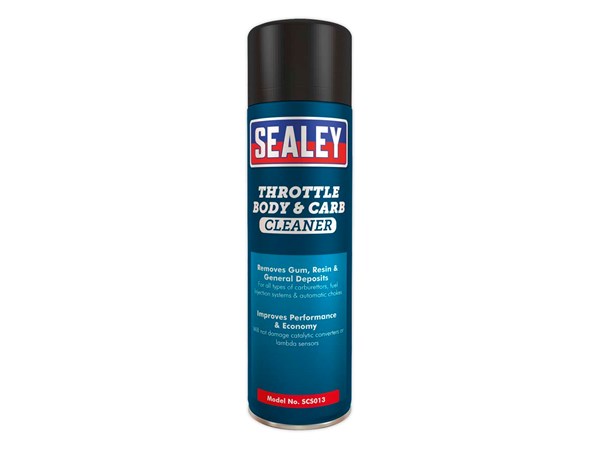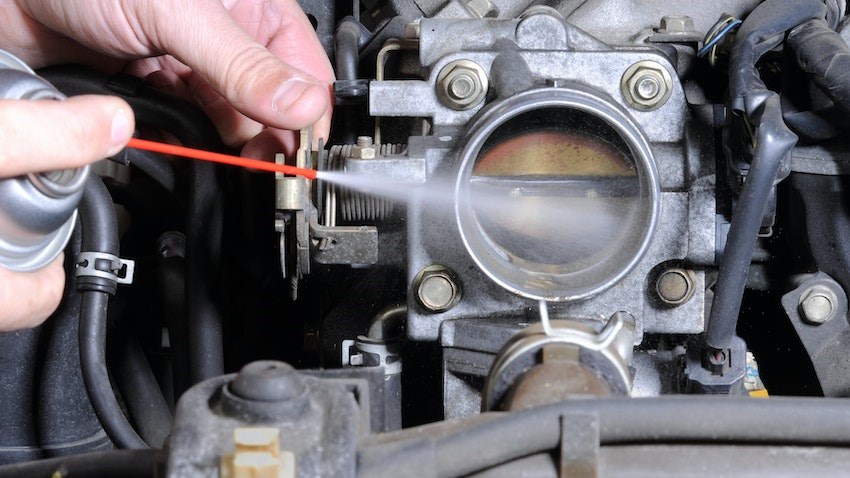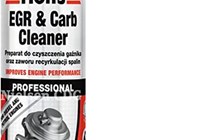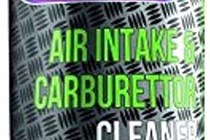ou’d be amazed at how much car maintenance you can do yourself. There are the super basics such as checking tyre pressure and refilling windscreen washer fluid. But there are perceivably more complex tasks too such as changing air and oil filters and restoring hazy headlights, which are in fact straightforward, very satisfying to do, and simply require a little guidance.
Cleaning your car’s throttle body sits in the latter camp. Though, with cleaning a throttle body, it’s not so much a case of perceived complexity, but rather being aware of it at all.
This is a guide to your car’s throttle body, and how to clean it.
What is a throttle body?

The throttle body regulates how much air goes into the engine to mix with the fuel. Modern cars use electronics to connect the accelerator pedal to the throttle body and to calculate how much fuel to inject into the combustion chamber depending on the volume of air coming in. The throttle body, therefore, has a very important job and needs to be clean and in good condition.
You can see what it looks like in the image above. It sits between the intake manifold and the air filter and is made from aluminium. It is likely covered by an air duct that connects the air filter and throttle body.
As the fuel and air combust in the chambers, carbon deposits accumulate on the throttle body, which can have detrimental effects on how your car’s engine runs.
Symptoms of a dirty throttle body include rough idling and engine running (including misfires), and stalling. These symptoms occur because the clogged or dirty throttle is unable to draw in the correct volume of air required and creates a bad fuel-air mix. The throttle body’s idle sensor can also be affected and not work properly. You should consider cleaning the throttle body every 20,000 miles or so.
It’s an apt name. Throttle body cleaner is an aerosol spray that you apply to a dirty throttle body and can be used alongside an old toothbrush or similar to remove dirt and grime.
Below are the best throttle body cleaners:
Holts Egr & Carb Cleaner for Petrol & Diesel Engines 500ml
Editor’s Pick

Price: RRP £11.99 | VIEW OFFER
Very effective and great value, Holts’ EGR and Carb Cleaner is our top recommendation. It can be used beyond cleaning a throttle body and carburettors, and also for air intakes and exhaust gas recirculation (EGR) valves.
Wynn’s Air Intake/ Carb Cleaner 500 ml
Runner up

Price: RRP £7.85 | VIEW OFFER
Also a very effective throttle body cleaner. Unless you’ve got an old classic car, it’s unlikely you’ll use it to clean carburettors, but if you do, it’s excellent for that too.
Sas Throttle Body Cleaner Aerosol Spray
Third place

Price: RRP £32.98 | VIEW OFFER
These three products are all very similar and perform very well. The SAS Throttle Body Cleaner is worthy of a podium place and can be used in the same way as the Wynn’s spray.
Sealey Throttle Body & Carburettor Cleaner 500ml
From a popular name

Price: RRP £10.25 | VIEW OFFER
We know that many home mechanics are dedicated users of Sealey tools and that is fair enough. Its throttle body cleaner is good too and if itu2019s a name you wish to stand by, this spray allow you to and wonu2019t let you down.
How to clean a throttle body
Gather together the tools you’ll need first. These will be:
Screwdrivers (torx), sockets and pliers to remove the air duct – important note: if you are unable to remove the air duct leave throttle body cleaning to a professional.
Throttle body cleaner
An old toothbrush or similar for stubborn dirt
Paper towels to wipe away grime
Step by step:
- Park your car somewhere well ventilated and with plenty of working space. Use an inspection lamp if you wish.
- Disconnect your car battery’s negative terminal to prevent any risk of short circuiting.
- Locate the big air duct that connects the air filter and throttle body. Carefully remove it by loosening its clamps with a screwdriver, or whatever tool you need, along with any other hoses that need to be in order to access the throttle body. You may not need to remove the duct fully, but removing the air duct might require some gentle wriggling. Labelling the hoses helps you remember where to reconnect them afterwards. Avoid disconnecting any obstructing wires unless you’re sure about it.
- Now with access to the throttle body, spray the inside of the throttle body with cleaner. Be very careful not to let anything fall into the throttle body. Scrub any stubborn residue loose with the toothbrush and wipe away with the paper towels. Continue until the metal is completely clean. When finished, make sure the throttle body is totally dry and the surrounding area if there has been any spillage.
- Replace the duct and clamps, tightening to the same degree they were before.
- Remove your tools before reconnecting the negative battery terminal.
- Start the engine. Do not worry if there is initially some rough idling or white smoke from the exhaust. There may be some throttle body residue that needs to burn off; additionally, modern cars’ electronic brains sometimes have to recalibrate after the battery has been disconnected.
- Let the car idle for a couple of minutes and take for a test drive if you wish. If the throttle body was very dirty you may notice an improvement in performance and even economy. Ultimately, cleaning a throttle body is one task in the overall upkeep and longevity of your car’s engine.
Sign up to the Parkers Newsletter to keep up to date with more of the latest reviews, news, and recommendations from the Parkers team.
Just so you know, whilst we may receive a commission or other compensation from the links on this website, we never allow this to influence product selections – read why you should trust us
Just so you know, we may receive a commission or other compensation from the links on this website - read why you should trust us.
















